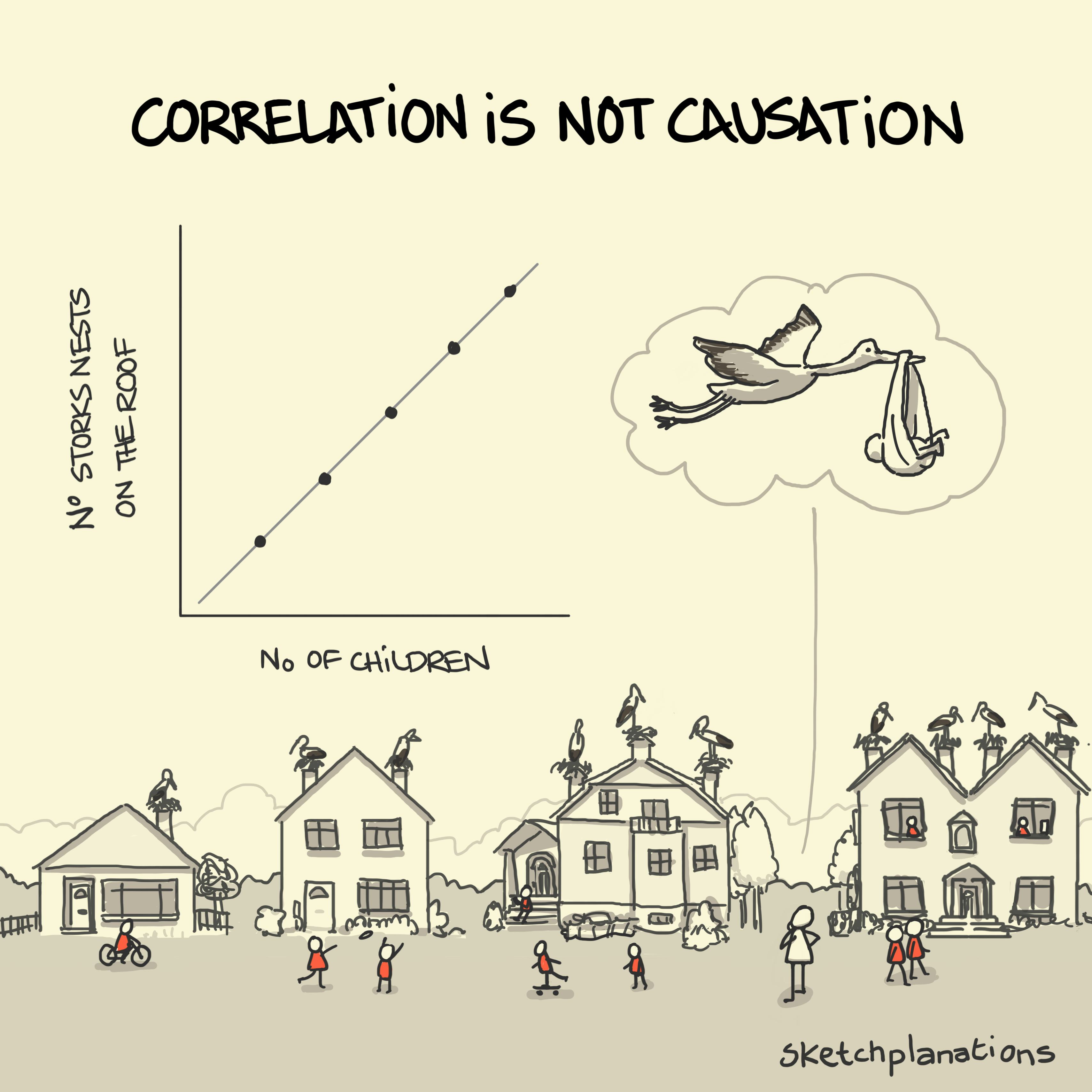Get my new weekly sketch in your inbox
Join over 30,000 people learning something new in a moment each Sunday.

Correlation is not causation
When we notice two things change with each other — sunny days and ice cream sales, or player height and goals scored — it's natural to think that one thing is the cause of the other. And it's only a small step to consider that if you do more of one, you'll get more of the other. But this instinct and our natural sense-making behaviours can easily lead us astray. Just because two things change together — are correlated — doesn't mean that one causes the other: correlation is not causation.
You might reasonably notice a correlation between the number of children in a household and the number of storks nests on the roof of houses in Denmark or Holland. Fortunately, while the two may be correlated it's not hard to see that it's most likely not the storks that are causing the larger families and instead another factor such as the size of the house that is the more likely cause. As such it's a handy reminder that correlation is not causation.
This is also the subject of my favourite xkcd on correlation, and another on cell phones to drive the point home.
For more see the excellent spurious correlations.
The stork nest example is from Darrel Huff's How to Lie with Statistics, as is the example on Sampling Bias.
You’re welcome to use and share this image and text for non-commercial purposes with attribution. Go wild!
See licence

